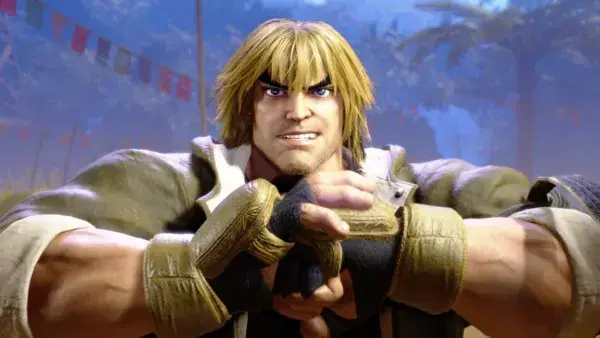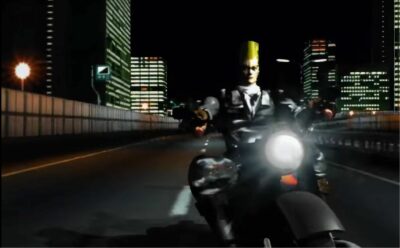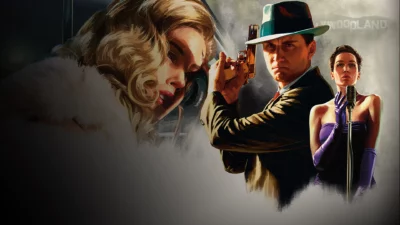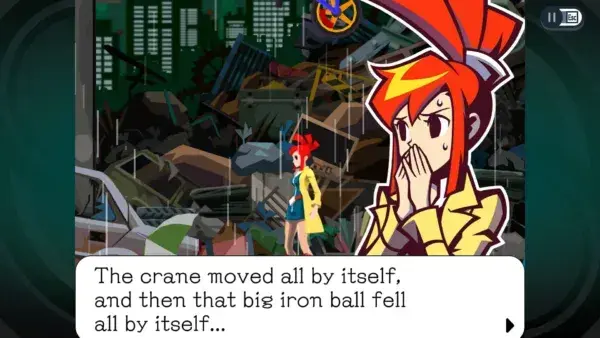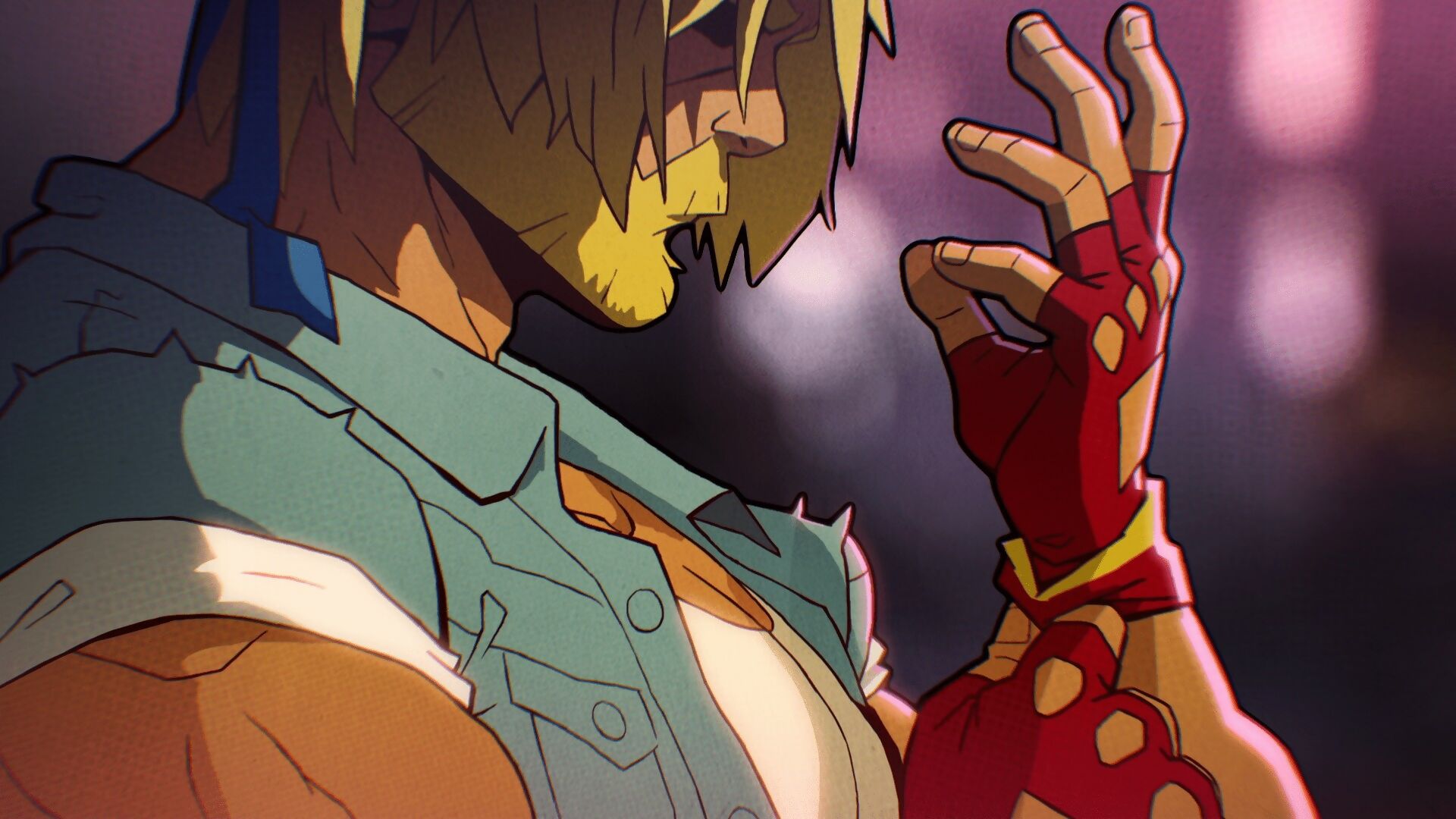
If you’re over a certain age, then you’ve probably been drawn to a new video game because it reminds you of something you’ve played before. It doesn’t matter what genres you were into as a youth – you’ll almost certainly find a recent release that captures the essence of those old experiences.
These modern homages sometimes use nostalgia as a lure, building up an audience by appealing to our rose-tinted memories. Whether you’re craving a classic turn-based RPG, Mega Man-style platformer, or point-and-click adventure, there’s bound to be a game released in the last couple of years that fits the bill – and with a booming indie scene and old-school franchises regularly brought back through Kickstarter campaigns, it’s clear there’s a lot of love for those classic experiences.
“Retro is always going to resonate with a lot of people because it’s instantly recognisable,” says Dave Oshry, the producer of retro-inspired shooter, Dusk. “It’s the past of video games meeting the future.”
Dusk takes its cues from a nineties wave of pioneering first-person shooters – it draws on Doom, Quake, Half-Life, and many others for its fast-paced gunplay. “Jumping and moving and shooting is never going to go out of style,” says Oshry. “Is retro ever going to be as big as stuff like God of War and Spider-Man? I don’t think so. Red Dead Redemption and GTA are always going to be these giant experiences, but there’s definitely a market for the retro stuff.”
We’ve seen a definite shift towards retro game design in recent years, whether it’s Pillars of Eternity rejuvenating a very specific style of RPG, or the countless remasters and re-releases of franchises like Crash Bandicoot and Spyro. Evidently, there’s a ready market for revivals like these – after all, without the demand from players, none of these games would exist.
“I think [this interest] has always existed, but the games seem to come and go in waves,” says Sebastian Mayer, lead programmer on Parkitect, the theme park sim inspired by RollerCoaster Tycoon. “In 1994, there was Theme Park by Bullfrog, which RollerCoaster Tycoon then drew a lot of inspiration from, so I’d say we’re currently in a sort of second revival of this genre.”
For Mayer, it’s the way technology has evolved – and become ever more affordable – that has helped bring about a rise in the number of retro-inspired games like his. “Audience interest certainly is a variable,” he suggests, “but I think a bigger factor for not seeing games like these earlier was a lack of opportunities. For a while, it just wasn’t possible at all for smaller teams to release games on consoles or Steam, and the tools for making big games were missing. Bigger developers tend to keep their risks as low as possible by making ‘safe’ games due to long development times and high costs.”

Modern retro games like Battle Princess Madelyn need compromises to appeal to a contemporary audience, which means adding in features that weren’t available in the eighties.
This is something Garret Randell, Parkitect’s lead artist, agrees with. He notes how “prohibitively expensive” it once was for small indie teams to gain access to game engines and development tools. “These days, it’s much easier to jump into making a game and learning the tools,” says Randell. “Graphical techniques have also improved and become easier to create for, and that helped our tiny art team a ton.”
Ask any indie developer what engine they use to create their game, and you’ll most likely get one of two answers: Unreal or Unity, with the latter in particular the more prominent of the two.
And while these engines can be used to create all kinds of games – from sprawling 3D environments to smaller 2D titles – using Unity to recreate a specific, low-poly look can also be tricky, according to Dusk’s Dave Oshry.
“Dusk is ugly on purpose, right?” Oshry says. “David [Szymanski, primary developer of Dusk] specifically used a lot of the same limitations they had back in the nineties, but Unity kept trying to make the game look better. He had to fight with the engine a lot to make sure the game stayed ugly.”
For Streets of Rage 4 developer Jordi Asensio, meanwhile, creating a bold new look for Sega’s belt-scrolling brawler series created its own challenges. “Even though consoles and PCs can now handle large textures, 2D games with large 2D sprites are pretty rare,” he says. “There are a lot of gorgeous pixelated games out there, but I think Streets of Rage 4 is one of the few games using hi-res hand-drawn graphics.”
According to Asensio, the sheer size of the characters and background textures meant his team had to “invent our own production pipelines” to ensure the game ran smoothly at 60 frames per second.
Living in the past
The challenges of reviving a series like Streets of Rage aren’t purely technical, however. The industry has, after all, been driven forward by the passion and determination of developers looking to overcome those restrictions.
Instead, the greater challenge creators of neo-retro games face comes from the weight of expectation. When you’re reviving a game or genre that’s already well-known to a generation of fans, you’re dealing with an audience that has its own idea of what it would like to see from a homage or sequel.
“There are expectations of course,” says Asensio, “but they can be really different from one gamer to another. Some want to see retro pixel art graphics but with modern mechanics, others want beautiful new graphics but with old-school gameplay. Others just want the full retro experience. There are as many expectations as there are gamers, because we all have and want different experiences.”
For Texel Raptor, the team behind Parkitect, their central task was to create a game that recalled RollerCoaster Tycoon, but also stood on its own two feet. “The theme park sim genre was dominated by RollerCoaster Tycoon so heavily that we would inevitably get compared to it,” says Mayer, “so we needed something to clearly distinguish ourselves.”

After the success of their Wonder Boy remake, The Dragon’s Trap, DotEmu were given the chance to work on Streets Of Rage 4.
For Parkitect, this meant coming up with new ideas, like backstage management: players now have to perform tasks like restock their stores and provide designated parking spaces for employees. “This makes a big difference in how the game plays and how you design your parks compared to other [theme park sim] games,” Mayer explains.
When it came to Dusk, its developers were conscious that its design wasn’t “trying to pull from any one specific game.” Instead, the team wanted to capture what it was that gamers – themselves included – loved about those old-school shooters. “Dusk isn’t really a slave to the old designs,” says Oshry. “It’s how you remember the old games.”
He adds that certain modern “concessions” were made that helped make the game more approachable for modern players. “Things like having full air control, slides and flips, and really easy movement systems,” he says. “It wasn’t super-purposeful, it’s just that we wanted to make a game that was really accessible that anyone could play, but that reminded you of all those games from the nineties or early 2000s.”
Accessibility
Then there’s the word that seems to be on the lips of so many neo-retro developers we spoke to: accessibility. “There’s a difference between knowing what gamers think they want and what they actually want,” Oshry explains. “I think a big part of it is making it accessible so that anyone can get into it, not just hardcore retro shooter fans.”
The topic of accessibility raises an important point about returning to games from the past: while we might think back on those experiences fondly, actually playing them again can often spoil the illusion. Platformers that once thrilled us now seem repetitive and cruelly difficult; adventure games whose characters once charmed us now seem slow and ungainly to interact with.
Modern retro games need to take all this into account, and find ways of taking the best of those old games and combining them with new approaches. It’s something Jordi Asensio and his fellow developers were conscious of during the development of Streets of Rage 4.

The idea for Dusk first came about in the mid-2000s, but development didn’t properly begin until 2015.
“One line of thought we have is to identify frustrations from old games,” says Asensio. “For example, enemies going outside the screen is very annoying, so we tried to fix that with screen boundaries.”
His colleague, Cyrille Lagarigue, agrees that the challenge of making a new Streets of Rage lies in finding the balance between old and new: “We want to add moves to the characters, new ways to use them, new possibilities,” he says, “but we don’t want a game that has a feeling that is too different from the originals. So we’re always adjusting to find the right balance.”
Earlier this year, Wireframe caught up with producer Thomas Kern, who at that stage was putting the finishing touches to Monster Boy and the Cursed Kingdom – French developer Game Atelier’s homage to the Wonder Boy action-adventure series. Although Monster Boy retained the 2D perspective and Metroidvania format of the Wonder Boy series’ most fondly remembered entries, Kern was also keen to update some of the more frustrating aspects of those earlier games.
“I have to admit that it was a slow and painful process to find the right pacing and not fall into those old game design traps and tropes,” Kern told us. “When remembering old games, you often tend to forget the more painful and less glorious times. These include things like having to replay the same zone over and over, slow controls and high difficulty which was compounded by long walkways, high enemy respawn rates, and heavy damage taken from enemy attacks.”

Revised multiple times over the course of its development, Monster Boy and the Cursed Kingdom capably balanced old and new.
Through a lengthy process of iteration, Kern and his team gradually updated Monster Boy’s controls, difficulty balance, and mechanics. Through the course of development, the game’s creators began looking beyond the restrictions of the original series – in 1989’s The Dragon’s Trap, for example, the player could transform into other creatures, whose powers could be used to pass obstacles and defeat specific enemies. It was only possible, however, to transform at predefined points on the map.
“The first version of the game only allowed [the player] to transform in certain spots, which limited the freedom but meant it was also easier to design levels,” Kern explained. “It was a typical trope from ancient times when hardware limitations had an impact on the freedom of player interaction. We challenged ourselves by allowing [the player] to transform on the fly. The further you go in the game, the more it unfolds, and once you unlock all forms, the amount of possibilities is huge. We designed puzzles and traps around that and noticed how much more fun the game became.”
Ghosts of gaming past
There are some indie developers, meanwhile, who want to capture the essence of retro gaming in its purest form. Take Chris Obritsch, creator of Battle Princess Madelyn – a game closely modelled on Capcom’s screamingly difficult Ghosts ‘n Goblins series.
The horror-themed run-and-gun franchise hailed from the mid-eighties era of coin-munching arcade cabinets and repeated deaths, and for Obritsch, recreating the challenge of games like Ghosts ‘n Goblins – and its 1988 sequel, Ghouls ‘n Ghosts – was as important as getting the pixel art and jumping mechanics just right. “I’m super-old-school – my retro collection is nuts,” Obritsch says. “I like a challenge. I don’t want things handed to me.”

Development on Parkitect began in 2014, with Kickstarter and Steam Early Access guiding it to release in 2018.
The development began when Obritsch’s then-four-year-old daughter Madelyn said she wanted to be in Ghouls ‘n Ghosts so she could defeat the game’s first boss herself. Again, Obritsch’s original plan was to authentically replicate Capcom’s original hit, but he soon found out that developing and releasing a retro game to a modern audience needs compromise.
“One thing I’m getting a lot of heat for right now is not having a map,” Obritsch says. “Everybody is like, ‘If this was a more modern game, you would have put a level map in so people can find their way around.’ The levels aren’t really that big, and usually, if there’s a door, the key is within a screen or two.
“But for some reason, even in story mode, everyone wants to run to the right, it’s the weirdest thing. You can go left, up, right, down, but they don’t look. So I’m putting a map into the game now. We’re also putting some extra hints into the game for people who just aren’t used to older games, and I’ve actually redone three of the maps for the levels.”
Know your audience
As Obritsch has discovered, players frequently want different things from a neo-retro experience. With this community of potential players all pulling in different directions, the developers we spoke to say it’s important to listen to their feedback – these are, after all, the people who will likely be purchasing the final product. “We spent a long time working with and supporting the community, and I think that’s paid off,” says Randell.
“We basically came up with the core gameplay and features and steered the project,” adds Mayer, “and then lots and lots of details got filled in by the community.” No neo-retro title is truly its developer’s then, it seems; Battle Princess Madelyn wouldn’t have had so many characters if not for its Kickstarter stretch goals, for example – something that Obritsch laments as being “kind of a mistake.”

Released back in 2014, Shovel Knight has long been seen as a shining example of how to do neo-retro properly.
“We should never have done a lot of tiers,” he says. “[Putting in] all those extra tiers kind of wrecked the original design.”
Nevertheless, the developers we spoke to have all been driven by their passion for games of the past – which is, of course, something they share with their enthusiastic communities. “When we see all the love that people have for Streets Of Rage,” says Lagarigue, “it’s an honour and a pleasure to be able to make the game they have been waiting for for such a long time. There’s pressure, but it is the good kind of pressure that makes us want to do the best work that we can.”


